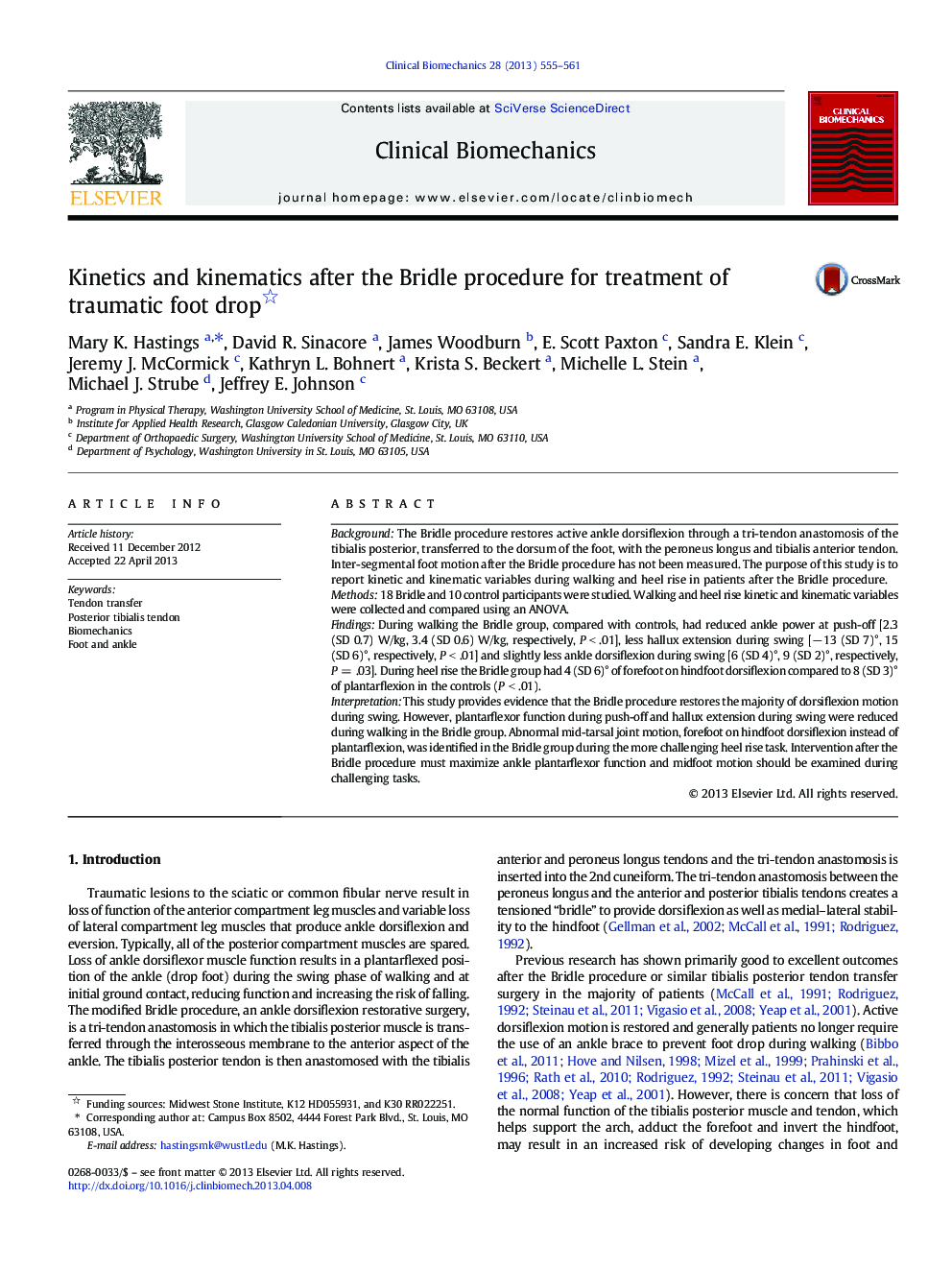| Article ID | Journal | Published Year | Pages | File Type |
|---|---|---|---|---|
| 4050704 | Clinical Biomechanics | 2013 | 7 Pages |
BackgroundThe Bridle procedure restores active ankle dorsiflexion through a tri-tendon anastomosis of the tibialis posterior, transferred to the dorsum of the foot, with the peroneus longus and tibialis anterior tendon. Inter-segmental foot motion after the Bridle procedure has not been measured. The purpose of this study is to report kinetic and kinematic variables during walking and heel rise in patients after the Bridle procedure.Methods18 Bridle and 10 control participants were studied. Walking and heel rise kinetic and kinematic variables were collected and compared using an ANOVA.FindingsDuring walking the Bridle group, compared with controls, had reduced ankle power at push-off [2.3 (SD 0.7) W/kg, 3.4 (SD 0.6) W/kg, respectively, P < .01], less hallux extension during swing [− 13 (SD 7)°, 15 (SD 6)°, respectively, P < .01] and slightly less ankle dorsiflexion during swing [6 (SD 4)°, 9 (SD 2)°, respectively, P = .03]. During heel rise the Bridle group had 4 (SD 6)° of forefoot on hindfoot dorsiflexion compared to 8 (SD 3)° of plantarflexion in the controls (P < .01).InterpretationThis study provides evidence that the Bridle procedure restores the majority of dorsiflexion motion during swing. However, plantarflexor function during push-off and hallux extension during swing were reduced during walking in the Bridle group. Abnormal mid-tarsal joint motion, forefoot on hindfoot dorsiflexion instead of plantarflexion, was identified in the Bridle group during the more challenging heel rise task. Intervention after the Bridle procedure must maximize ankle plantarflexor function and midfoot motion should be examined during challenging tasks.
